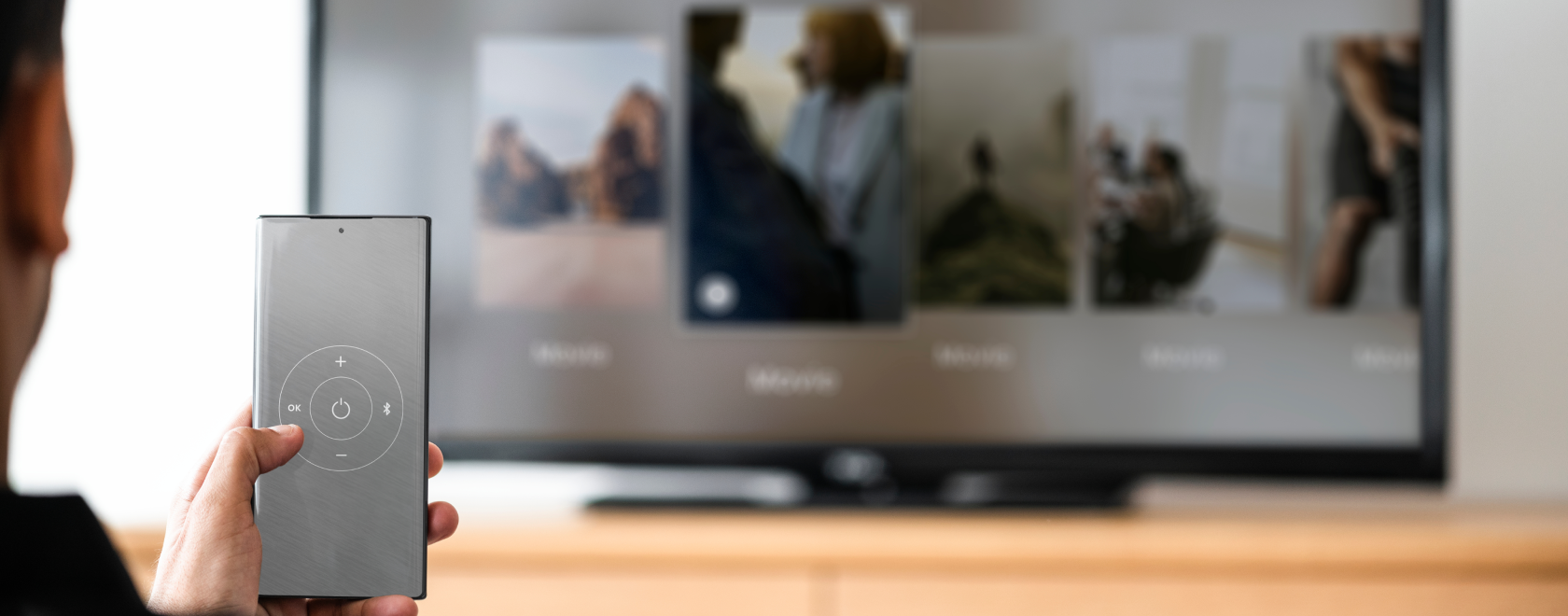How many times have you lost the clicker in the sofa cushions or discovered the batteries were dead right as the season finale began? Choosing to use phone as IPTV remote solves those problems at once: you never hunt for a handset, power is always at hand, and the layout can be customised. Below you’ll learn how to control IPTV box from smartphone and what new possibilities appear after the switch.
What a Virtual Remote Is and How It Works
A virtual remote control is a mobile app that sends commands to the set-top box by Wi-Fi, Bluetooth, HDMI-CEC, or an IR blaster if the phone provides one. The only rule is that the phone and the box share the same network. Instead of hard buttons you steer the on-screen pointer, change volume, reorder playlists, and even launch voice commands directly from the handset.
Step-by-Step: Connecting a Mobile Remote
1. Identify how the box communicates.
For Android TV and Google TV, Google Home acts as an Android remote or iOS IPTV app.
MAG devices running Ministra pair with Infomir MAGic Remote.
Xiaomi Mi Box, Nvidia Shield, Ugoos, and other Android units work with popular IPTV remote control apps like Remote for Android TV or CetusPlay.
Older STBs that accept infrared require a phone with an IR blaster and a generic “remote” app such as ZaZa Remote or Peel Mi Remote.
2. Install the application on your phone and grant local-network permissions.
3. Connect both phone and box to the same router—preferably the 5 GHz band for fewer disruptions and faster response.
4. Run automatic device discovery. Most software finds the box instantly; if not, enter its IP address manually from the network menu on the STB.
5. Complete pairing. A code appears on the TV screen; type it into the app and the STB control link is ready.
Everyday Advantages of a Mobile TV Controller
A swipeable touchpad replaces direction arrows, offering an intuitive IPTV interface for mobile use.
Long URLs or playlist links paste in seconds, eliminating on-screen typing.
Hardware volume keys on the phone alter TV loudness—no physical remote required.
A full keyboard speeds up searches: type a film title in moments.
One tap on the mic icon and “football HD” is spoken; the box switches via one-click navigation.
Screen-off gestures let you pause video and darken the panel while music audio continues, handy for loungy channels.Troubleshooting Common Issues
Slow feedback usually means the devices are on different frequencies; keep both on 5 GHz and disable battery-saver mode. When the app cannot locate the box, ensure the router isn’t blocking multicast and assign the box a static IP. If settings vanish after standby, enable “Launch at startup” or “Background service” in the remote app.
When an IR Handset Is Still Handy
Infrared remains a fall-back if Wi-Fi is weak or the router reboots. Many Xiaomi, Huawei, and Poco phones ship with IR ports that substitute a chunky clicker. Some vintage TVs lacking CEC need one programmable button; here the hybrid of app and IR covers every situation.
Why a Virtual Remote Is Worth It
A smartphone as universal TV remote ends battery swaps and removes clutter on the coffee table while adding perks such as quick keyboards, mobile TV controller automations, and hooks for a touch interfacesmart home routine. Spend five minutes installing an app and enjoy wireless IPTV control without remote buttons or extra effort—after one trial run, the old clicker is likely to become a spare in the drawer.
